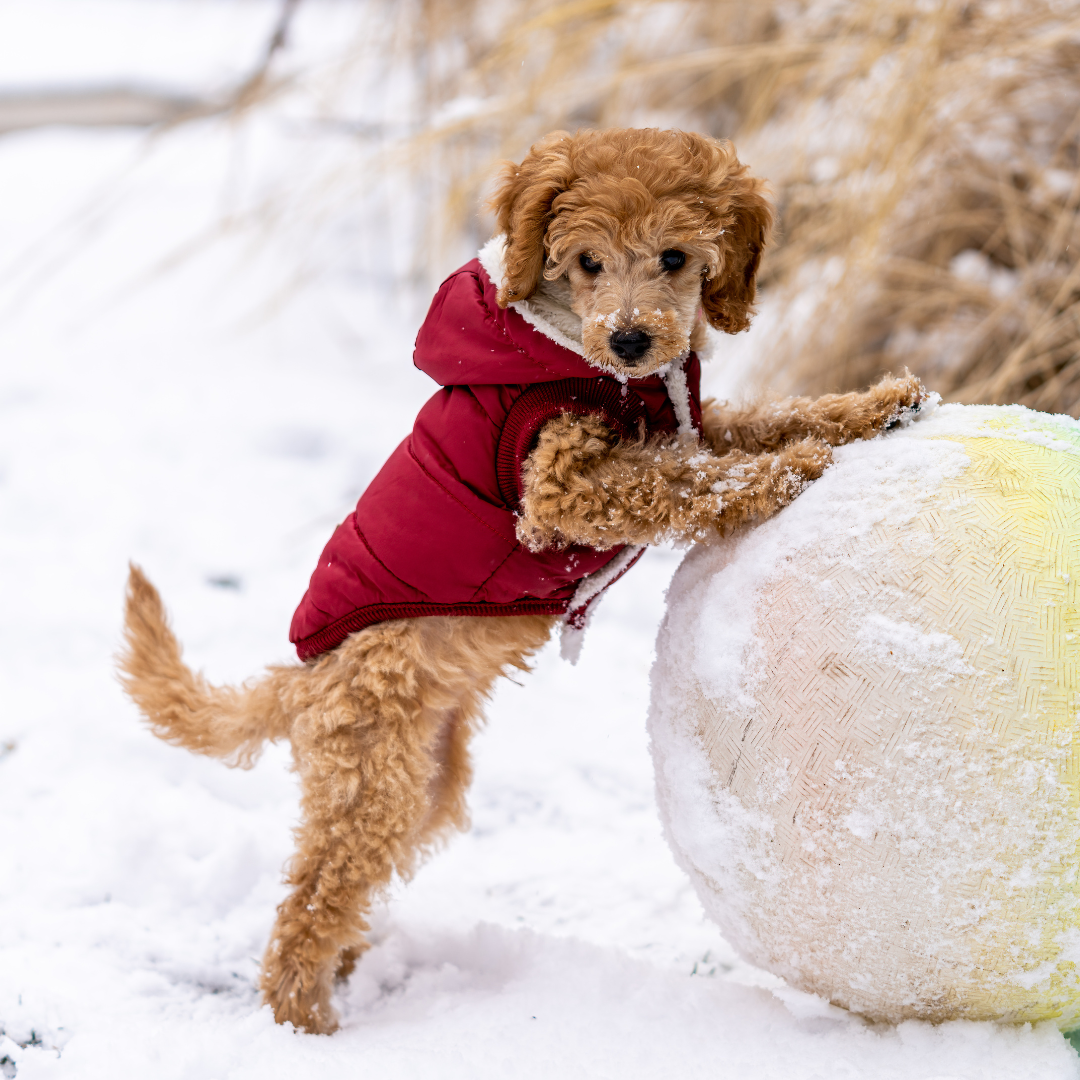
Understanding Canine Comfort: How Cold is Too Cold for Dogs
As the temperature drops, it's time for all of us dog lovers to be extra mindful of our furry friends. The question on every pet parent's mind: How cold is too cold for dogs? In this blog, we'll explore how cold is too cold for dogs and provide essential tips to ensure your pup's tail keeps wagging all winter long.
Understanding a Dog's Cold Tolerance:
Dogs, like humans, vary in their ability to handle cold temperatures. Factors such as breed, size, age, and overall health play a crucial role in determining a dog's cold tolerance. While some breeds, like Huskies and Malamutes, are well-suited for colder climates, others, such as Chihuahuas, Vizslas or Greyhounds, may be more sensitive to the cold. If you’re wondering about your pup take a look at Your Purebred Puppy for a detailed guide on characteristics of different breeds.
Identifying Signs of Discomfort:
To gauge whether it's too cold for your dog, pay close attention to their behavior and physical signs of discomfort. Signs that your dog may be too cold include shivering, seeking shelter, lifting paws off the ground, or exhibiting signs of anxiety. If you notice any of these signs, it's time to take action to protect your pet from the cold.
Ideal Temperature Range for Dogs:
While it's true that there's no one-size-fits-all answer, a useful guideline indicates that most dogs find comfort in temperatures ranging from 45 to 85 degrees Fahrenheit. For instance, a Siberian Husky is bred to endure temperatures as low as -60 Fahrenheit, while a Vizsla may seek shelter if the temperature drops below 40 degrees Fahrenheit. Nevertheless, it's essential to factor in elements like wind chill, humidity, and the duration of exposure. Smaller and short-haired breeds may require additional protection in colder weather, and older dogs or those with health issues may be more susceptible.
Tips for Keeping Dogs Warm:
- Invest in Dog Apparel: Consider dressing your dog in a cozy sweater or jacket to provide an extra layer of insulation. Ruffwear has a large selection of gear to keep pups happy outside in all weather conditions.
- Limit Outdoor Exposure: Reduce the time your dog spends outdoors during extremely cold weather, especially during windy or wet conditions.
- Provide Adequate Shelter: Ensure your dog has access to a warm, dry shelter with proper bedding.
- Check Paw Health: Cold weather can be harsh on a dog's paws. Check for ice accumulation, and consider using paw wax or boots to protect them.
- Monitor Indoor Temperatures: Keep your home at a comfortable temperature, and provide warm bedding for your dog to snuggle into.
Caring for Those Paws: A Winter Essential
Now, let's talk about your furry friend's precious paws – a crucial aspect of winter care often overlooked. When temperatures drop, it's time to consider if your dog needs booties. If your pup starts lifting their paws or seems uncomfortable during walks, it might be a sign they need a little extra protection. Dog booties can shield their paws from cold surfaces, ice, and snow, providing insulation and preventing potential injuries.
Another winter woe for paws is the salt used to melt ice on sidewalks and roads. While it keeps us safe, it can wreak havoc on your dog's sensitive paw pads, causing salt burn and discomfort. To combat this, consider using pet-safe ice melts or wiping your dog's paws with a damp cloth after walks to remove any salt residue. Alternatively, you can opt for natural alternatives like coconut oil or paw balms to create a protective barrier against harsh winter elements.
If your pup isn't a fan of booties, there's a DIY solution you can try. You can make your own paw protectors using baby socks or small, breathable fabric bags secured with Velcro. This provides a barrier between their paws and the elements while offering a more comfortable alternative for dogs who aren't keen on traditional booties.
Understanding your dog's cold tolerance is essential for keeping them safe and comfortable during winter months. By paying attention to their behavior and taking proactive measures, you can ensure that your furry friend stays warm and happy even in chilly weather. Remember, every dog is unique, so tailor your approach based on their individual needs and characteristics.











